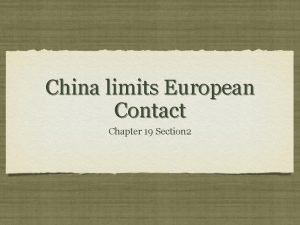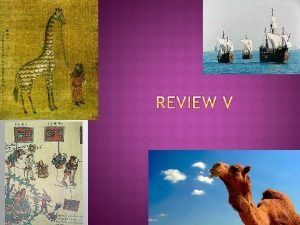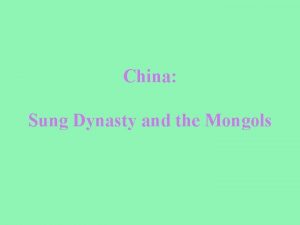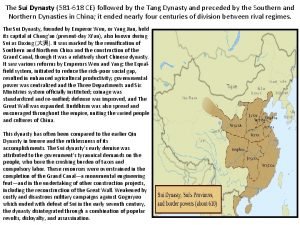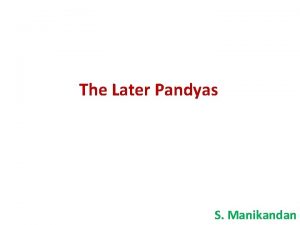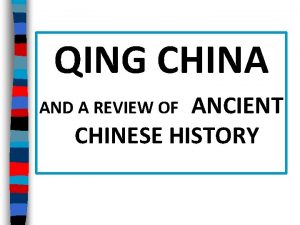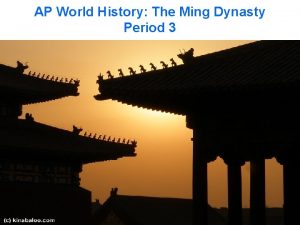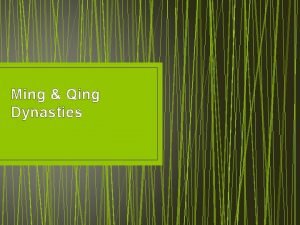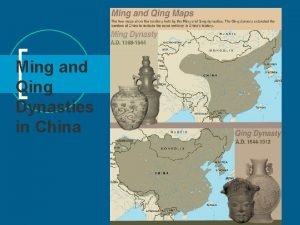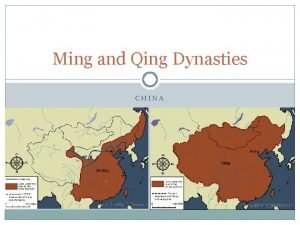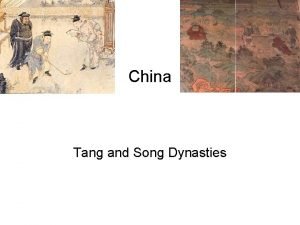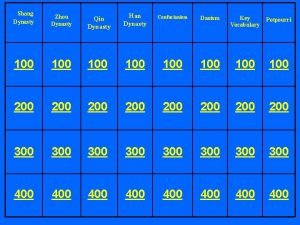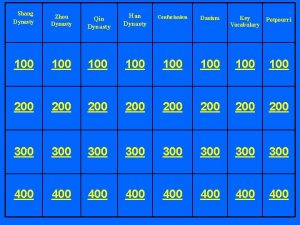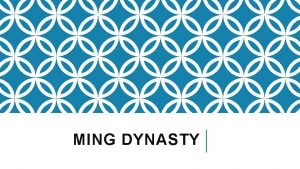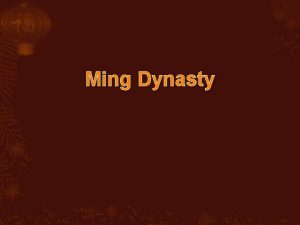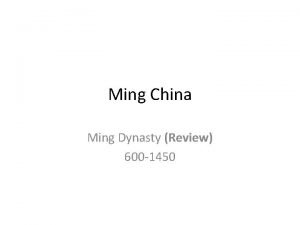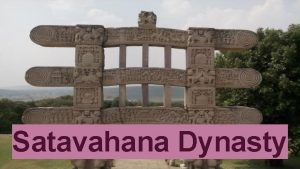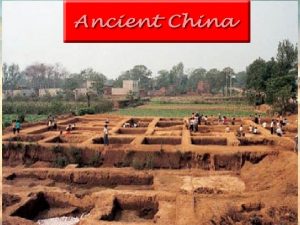Ming Dynasty Tokugawa Empire Ming Emerges Founder Hongwu














- Slides: 14

Ming Dynasty & Tokugawa Empire

Ming Emerges Founder: Hongwu, 1368 after defeating Yuan (Mongols) dynasty

In what ways did the Ming dynasty continue previous Chinese traditions? Re-instated the Civil Service Exams Played greater role than ever before More complex than previous eras Broken into provincial exams & imperial exams State subsidies for education reinstated Confucian/Neo-Confucian ideals Subordination to elders, subordination of women

In what ways did Hongwu attempt to ameliorate the life of the peasant? Promoted public works projects Dykes & irrigation systems to ensure better crop yields Tax-exempt land for anyone who would cultivate it Lowered forced labor demands (by both govt and gentry) Promoted textile production *this all led to SHORT TERM improvements

How did the Gentry return to social dominance? Exempt from land taxes Received special privileges: carried around in chairs! Supplemental income: money-lending, gambling dens Took advantage of peasants Foreclosed on peasant lands Gentry was celebrated in stories and illustrations Commoners viewed as lazy and wasteful

Women’s Status in the Ming Imperial women continued to play important roles behind the scenes (wives, concubines, dowager mothers) Upper class: taught to read and write, play instruments, painted Commoners: outlets such as courtesans or entertainers although most remained as farmers

In what ways did the Ming expand? Continuing population boom Crops introduced by Spanish & Portuguese: sweet potatoes, maize, peanuts increased agricultural production 1600: population grew from 80 -90 mil to 120 mil Commercial growth: Domestic markets grew Overseas trading grew Balance of trade remained in hands of China European traders arrived: Macao and Canton Benefited merchant class -> became landed

How did Ming culture compare to previous dynasties? More colorful and lively, depicted country and city life Continued practice of painting scholars Major development in literature: Full development of Chinese novel Spread of literacy among upper classes Woodblock printing made books more widely available More impressive cultural development than in the Tang and Song eras

In what ways did the Ming react to the arrival of the European? How did they interact? Jesuit missionaries attempted to infiltrate top levels of the govt. (marked comparison to Di Nobili’s attemps in India) Limited # of scholars showed interest Shared scientific and technological knowledge Knew this was the way to gain entrance to court Corrected calendars, improved weapons (ostracized most scholars) Late Ming emperors allowed Europeans to remain Consequences for Chinese during Qing dynasty

How did the Ming experience decline? Removal from overseas trade Incompetent rulers Official corruption (eunuchs came to rule much of imperial life) Public works fell into disrepair Famine Peasant issues: selling children into slavery, starvation, uprisings Foreign threats: Manchu leader would establish new and last dynasty, Qing Toppled in 1644 by INTERNAL forces

How did Japan unify? Remember that prior to this time period Japan is ruled by a feudal society, similar to that of Medieval Europe. Daimyo hold most of the power, the Emperor is but a figurehead and the Shogun relies on loyalty of the Daimyo to maintain military rule. Three powerful daimyo unify Japan: 1) Nobunaga, 2) Toyotomi Hideyoshi, 3) Tokugawa Ieyasu Tokugawa (as unified Japan came to be known) successfully controlled outlying daimyo 2 ½ centuries (1603 -1887)

How did Tokugawa deal with the European challenge? Europeans brought Indian & Chinese goods in exchange for silver, copper, pottery and more importantly western technology (GUNS) Commercial contacts encouraged Japanese overseas trade Christianity in Japan: comparable experience to India and China Nobunaga: used it as a tool against the Buddhist monasteries, embraced western style Hideyoshi: skeptical of Christianity, had conquered Buddhist rebellions Tokugawa: implemented all-out persecution of Jesuits and Christian converts

Was Japan really isolated? 1616: foreign merchants confined to handful of cities 1630’s: Japanese merchants banned from over-seas trips 1640’s: only Dutch & Chinese allowed to trade at Nagasaki This allowed the Japanese to remain aware and educated of Western advances (huge contrast to contemporary Chinese) 1650’s+: Consolidation of Tokugawa regime School of National Learning: revival of indigenous culture

Was the Tokugawa period really a “dark age”? Flowering of indigenous learning, artistic style, and culture Period of Peace: consolidation of regime and extension of bureaucracy though not totally centralized Military advancements: weapons technology, military organization (world’s first police state) Period of prosperity: trade continued with islands around Japan, China, Dutch Population and Urban growth Social mobility
 How did the hongwu emperor improve life for the peasants?
How did the hongwu emperor improve life for the peasants? Chapter 19 section 2 china limits european contacts
Chapter 19 section 2 china limits european contacts Ming hong wu
Ming hong wu Sung dynasty founder
Sung dynasty founder Ce sui
Ce sui Madhuravijayam
Madhuravijayam Ming dynasty trade routes
Ming dynasty trade routes Ming dynasty ap world history
Ming dynasty ap world history Qing dynasty location
Qing dynasty location Qing social structure
Qing social structure Ming dynasty
Ming dynasty Ming empire
Ming empire Ming and qing dynasty venn diagram
Ming and qing dynasty venn diagram Buddhism and chinese culture
Buddhism and chinese culture How did the ming dynasty restore chinese rule to china?
How did the ming dynasty restore chinese rule to china?

